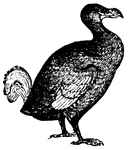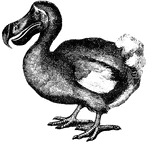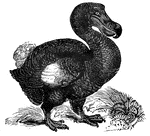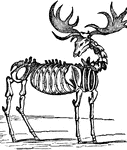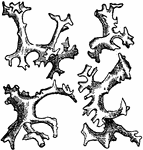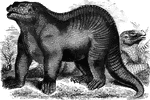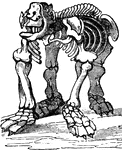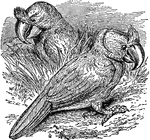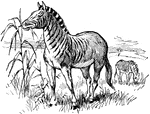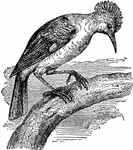Clipart tagged: ‘extinct’

Acanthoclinus
"(A fish that) had a compressed claviform body, posterior dorsal fins nearly opposite to the anus, prolonged…

Anoplotherium Commune
"The Anoplotherium commune was of the height of the wild boar, but its form was more elongated;…
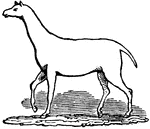
Anoplotherium Gracile
"The Anoplotherium gracile was of elegant proportions, resembling in size and form the gazelle,…
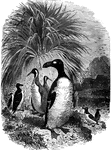
Great auk, razor-bills, and puffins
A scene depicting a great auk, as well as razor-bills and puffins. The great auk is now extinct.

Calymene
"The trilobite's general form is shown in the annexed figure of the Calymene Blumenbachii;…

Horse Foot
"Successive stages of modification of the feet of extinct forms of horse-like animals, showin gradual…

Horse Foot
"Successive stages of modification of the feet of extinct forms of horse-like animals, showin gradual…

Horse Foot
"Successive stages of modification of the feet of extinct forms of horse-like animals, showin gradual…
Horse Foot
"Successive stages of modification of the feet of extinct forms of horse-like animals, showin gradual…
Horse Foot
"Successive stages of modification of the feet of extinct forms of horse-like animals, showin gradual…

Iguanodon
An extinct fossil colossal lizard found in the Wealden strata; so called from the resemblance of its…

Operculum of Maclurites
An illustration of the operculum of the maclurites, an extinct genus of snails.

Mastodon
"Mastodon is an extinct genus of proboscideans, closely allied to the true elephants. The genus ranged…

Mastodon
Mastodons or Mastodonts are members of the extinct genus Mammut of the order Proboscidea and form the…
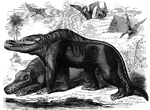
Megalosaurus and pterodactyls
A pair of megalosauruses, with a group of pterodactyls in the background.

Palaeotherium magnum
"The Palaeotherium magnum was of the size of a horse, but thicker and more clumsy; its head…

Palaeotherium minus
"The Palaeotherium minus was smaller in size compared to the Palaeotherium magnum,…

Passenger Pigeon
"Ectopistes migratorius. Passenger Pigeon. Wild Pigeon Adult: Upper parts, including head all around,…

Wild Pigeons
Once one of the most numerous bird species in the world, the common wild pigeon of the United States…
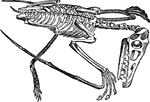
Pterodactyle skeleton
"So peculiar and strange is the structure of these animals, that the first specimen discovered was classed…
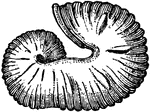
Scaphites equalis, Extinct Cephalopod Fossil
Scaphites equalis is a species of extinct cephalopods that thrived during the Cretaceous period. "A…

Tinoceras
"Tinoceras, or tinotherium, is a genus of mammals now extinct, found in the Eocene, and representing…

